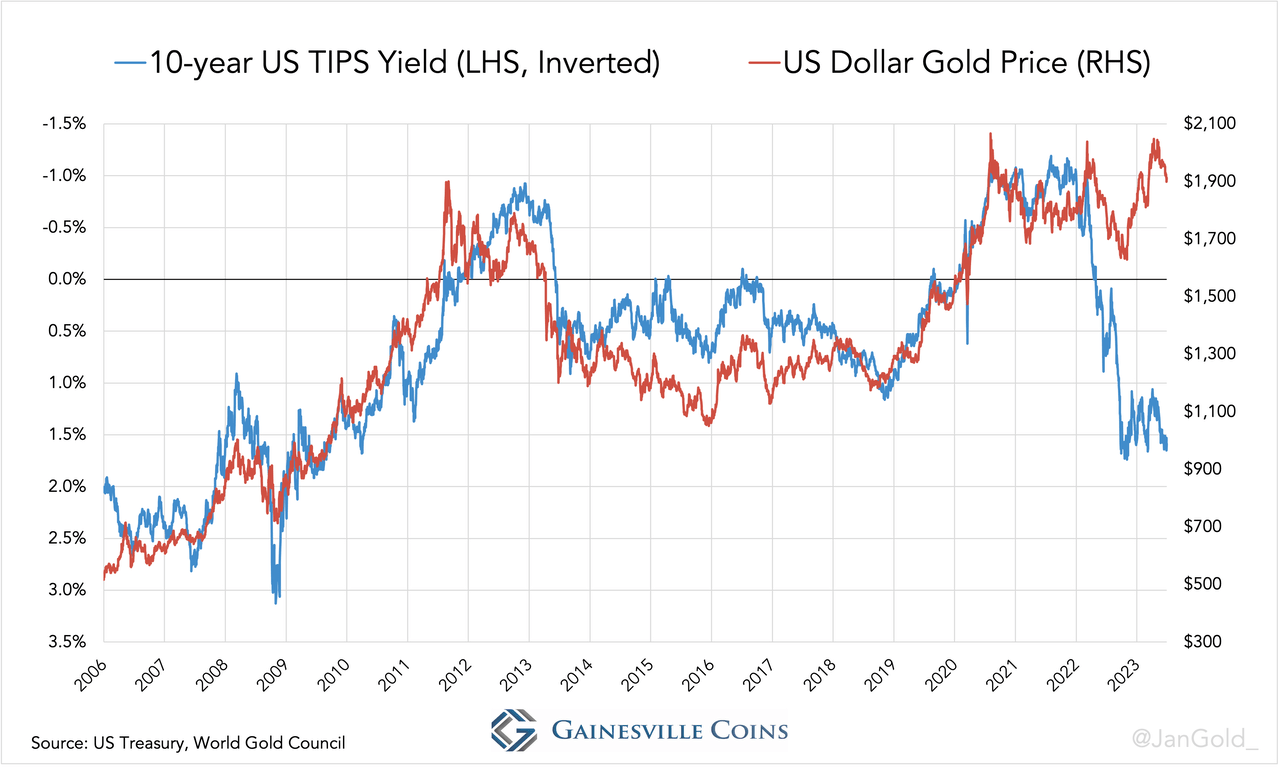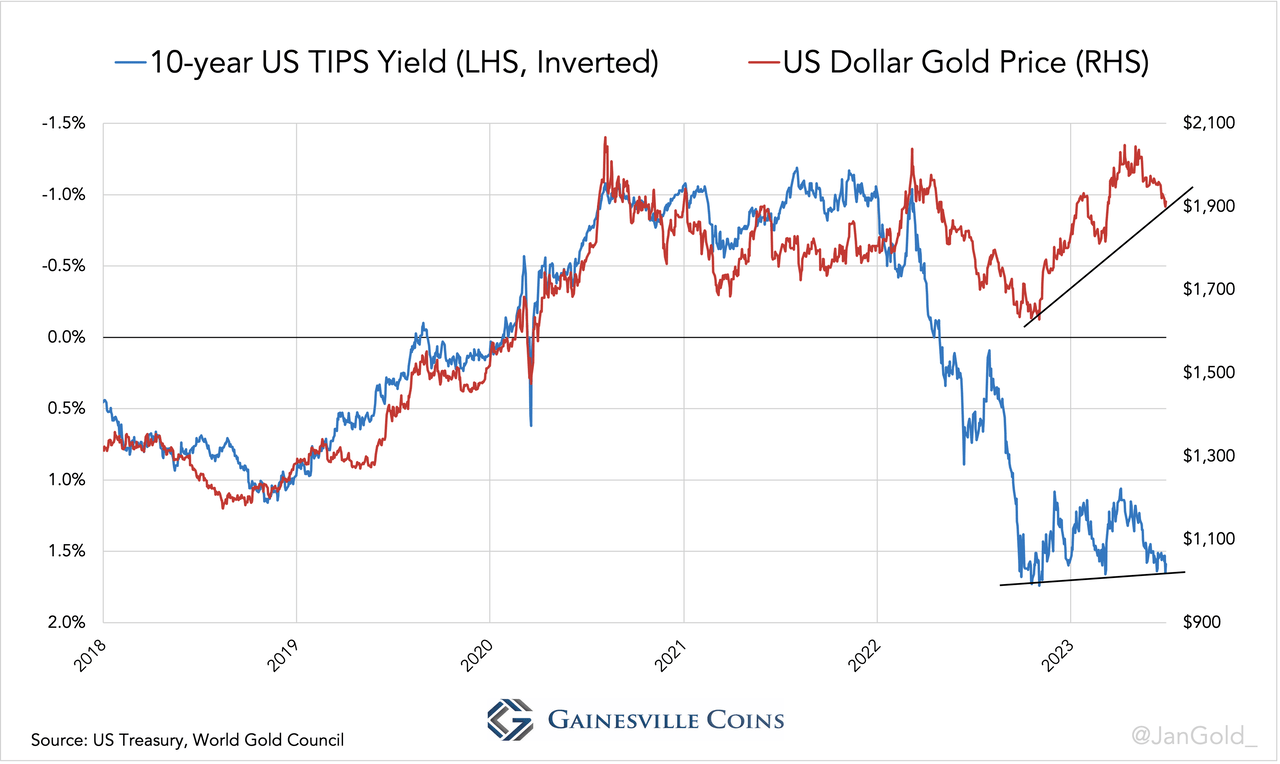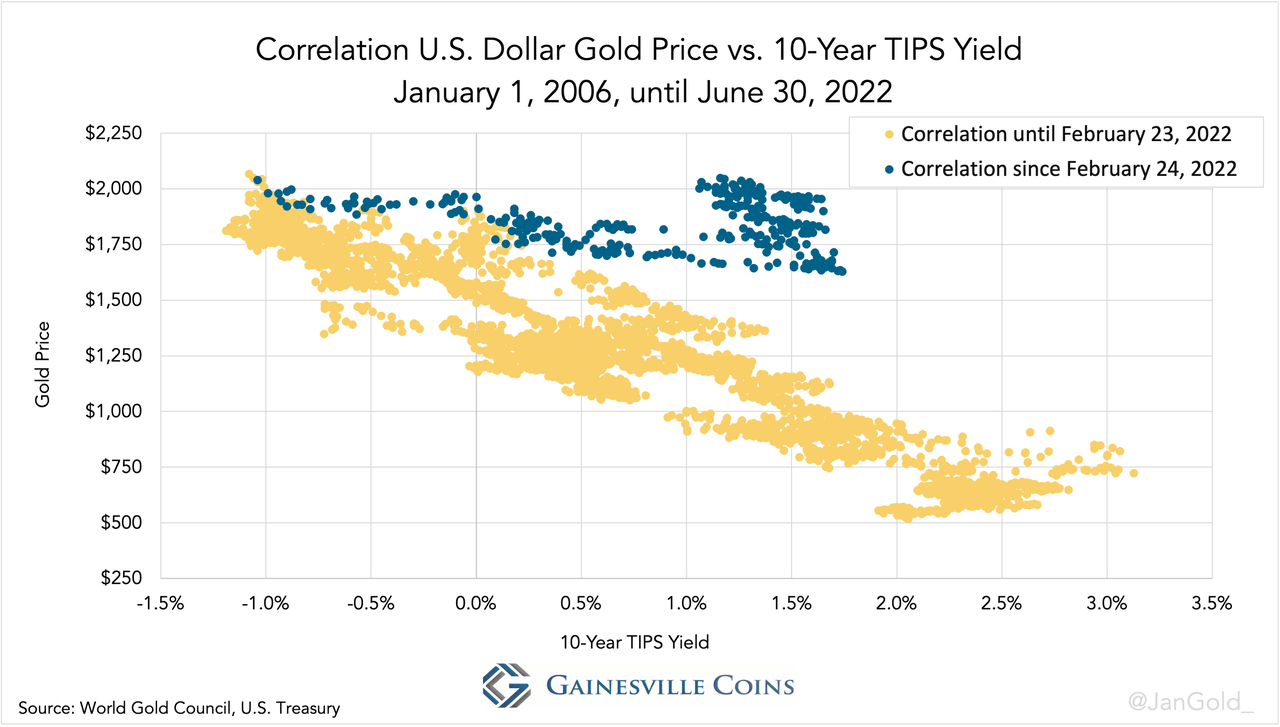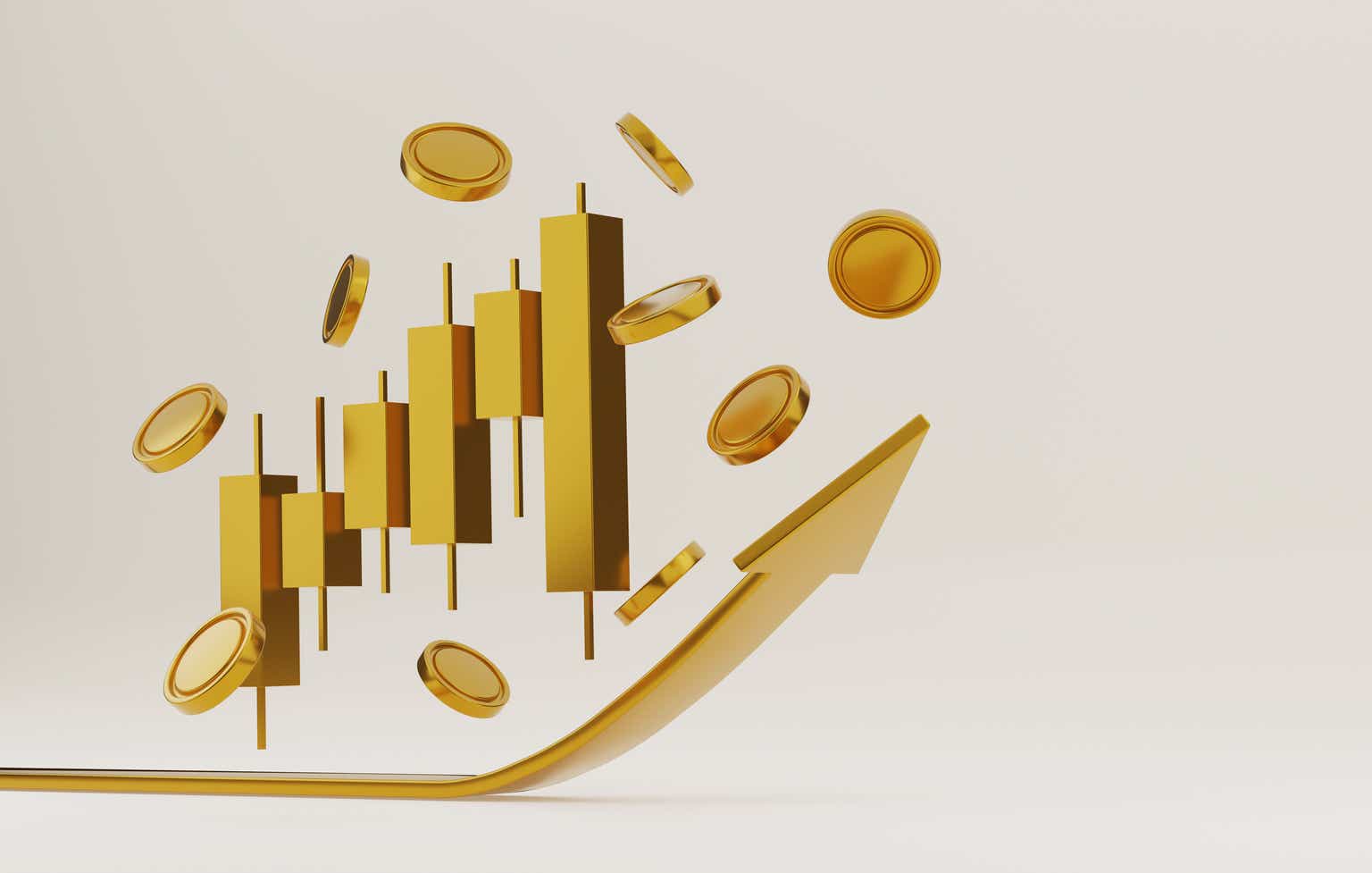The US dollar price of gold has been declining in the past two months, though it continues to show significant strength against the 10-year TIPS yield, to which it was tightly correlated from 2006 until 2021. Gold’s performance since early 2022 must be seen as bullish.
A big change has occurred in the gold market since Russia invaded Ukraine and the West seized the euro- and dollar-denominated assets from Russia’s central bank. Regardless of the price declining for the last two months, gold performance since February 2022 is momentous because it’s finally beating a pricing model that ruled from 2006 through 2021.
What Sets the Price of Gold
The most important driver for the US dollar gold price is the 10-year yield on Treasury Inflation Protected Securities (TIPS). For roughly 15 years gold and TIPS were tightly inversely correlated. Because owners of TIPS are compensated for inflation, the TIPS yield can be seen as the expected real interest rate. Also referred to as “real rates,” in short. The logic behind the correlation is that gold serves as a hedge on US government bonds (Treasuries), as gold has no counterparty risk. Gold is thus priced higher when the TIPS yield falls and vice versa. For detailed information please read my primer on TIPS.
The formula for the TIPS yield is:
TIPS yield = nominal Treasury yield – inflation expectations
In the chart below you can see that the correlation between the gold price and the TIPS yield started weakening in early 2022, when Russia stormed Ukraine. As the TIPS yield went up from -1% in February to +1.7% in November 2022, gold went down from $1,900 an ounce to $1,700, instead of $1,000 as previously suggested by the model. The tight correlation had changed to the upside because the market acknowledged more risk in holding Treasuries.

The TIPS yield axis is inverted.
In November 2022, I wrote:
Gold is in a transition phase. In the past nine months, two key developments – war and inflation – have made gold trade much stronger than how it was priced from 2006 through 2021. Both developments are likely to stick around in the coming years and will prove a tailwind for gold.
Since November 2022, the TIPS yield has slightly trended down, while the gold price has been firmly going up! Gold is still sensitive to the TIPS yield, but the gap in the chart between real rates and gold is widening.


In a scatter plot the change in the correlation can be recognized by the dots walking out of a diagonal cloud. When dots form a new diagonal cloud, the correlation strengthens.
Based on the old model, gold should be trading around $1,000, yet a fine troy ounce in the wholesale market is being exchanged for $1,900 at the time of writing. That’s a massive gap, which I don’t expect to subside.
Why the TIPS Model Had to Change
In my view, the tight correlation had to change some day as it didn’t make a lot of sense to begin with. Consider the following: in the TIPS model gold is trading as a hedge on US government bonds—the backbone of the international monetary system. Every year, though, the total value of US government bonds grows much faster than the total value of the above ground stock of gold. The US fiscal deficit (the growth in value of bonds outstanding) in 2022 was $1.38 trillion, while the value of newly mined gold was $200 billion. The tight correlation has an asymmetry in it.
From 2011 until 2021 the US federal debt has doubled, but the above ground stock of gold has grown by 17%. Now, consider that in 2011 and 2021 both TIPS and the gold price traded in the same vicinity (see chart 1). So how did the value of gold, expanded by 17% over this time horizon, properly hedge Treasuries that doubled in value?
What also strikes me is that gold reacted the same to the TIPS yield in positive as well as in negative territory. Shouldn’t gold (the hedge) react more aggressively when the market expects a loss on bonds as opposed to less profit?
Conclusion
Needless to say, it’s not up to me to decide how gold should be priced. What I do observe is that gold’s one-on-one correlation with the TIPS yield is a thing of the past and there is a rationale for it. I think gold will remain sensitive to real rates as the dollar’s world reserve currency status won’t end anytime soon. The degree to which gold reacts to real rates might differ in stages. It wouldn’t surprise me at all if the gap—or, the jaws—between gold and real rates continues to widen.
For now, sentiment in gold is disastrous. From a contrarian point of view this could indicate we are nearing a bottom. I’m seeing headlines from Bloomberg such as “Gold Is No Longer a Good Hedge Against Bad Times,” insinuating gold has lost its mojo. In September 2022 the Wall Street Journal wrote “Gold Loses Status as Haven.” In 2015, ABN AMRO Bank questioned gold’s safe haven status. Often these bearish headlines align with a turning point in the price of gold.
Original Post
Editor’s Note: The summary bullets for this article were chosen by Seeking Alpha editors.
Read the full article here





